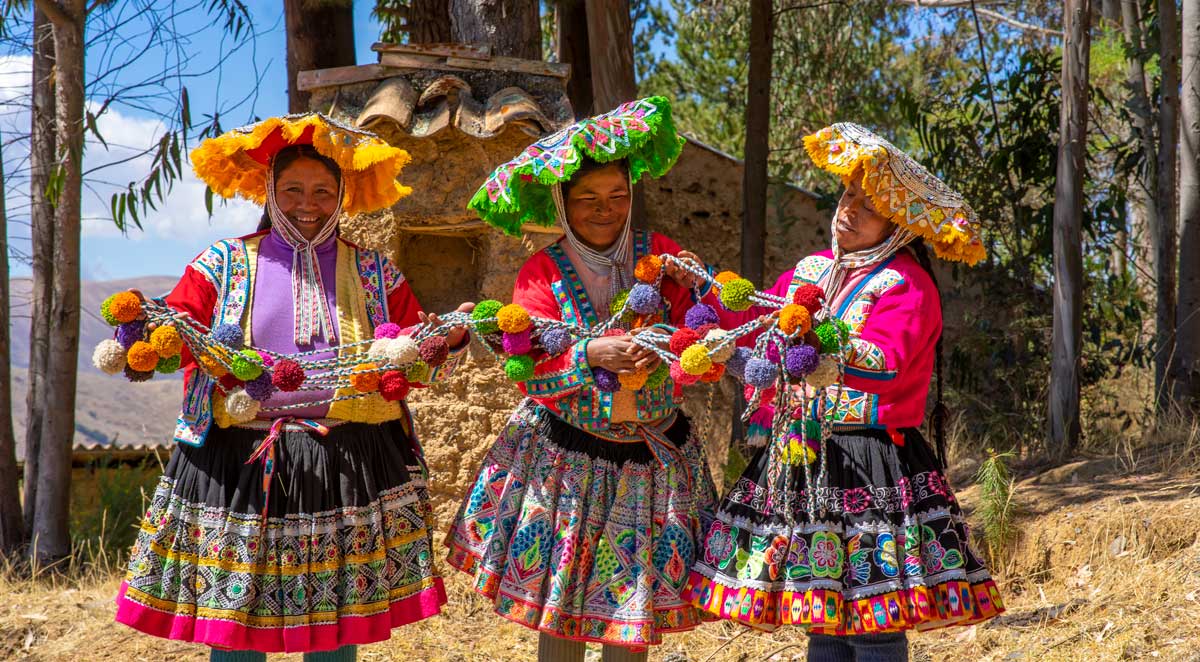RECETAS
Alpaca and Baby Alpaca Textiles Cusco
Alpaca Textiles:
The Living Art of Andean Culture. Alpaca has been fundamental in the life of Andean people since ancient times, and in Cusco, the textile tradition lives on thanks to artisan communities that produce unique garments. Manos Andinas, Kusi Ccoyllo, Pacha Illariy, and Chaskas are some of the most prominent suppliers of alpaca and baby alpaca textiles, using traditional methods that combine sustainability and high quality in each garment. In this article, you will learn more about alpaca fiber, its benefits, and how these communities in Cusco preserve their cultural heritage.
● Benefits of Alpaca and Baby Alpaca Fiber
Hypoallergenic fiber: Unlike sheep’s wool, alpaca fiber does not contain lanolin, making it an ideal choice for people with sensitive skin.
Natural Thermoregulation: Alpaca has the ability to keep warm in cold climates and cool in hot climates, making its textiles versatile for all types of weather.
Durability: Alpaca fibers are extremely resistant, ensuring that garments maintain their shape and softness over time.
Sustainability: Alpacas have a low environmental impact, as their way of grazing does not harm the Andean ecosystem, making this fiber an eco-friendly option.
● Essential characteristics of Alpaca and Baby Alpaca textiles
Alpaca vs. Baby Alpaca: Baby alpaca comes from the first shearings of young alpacas, offering exceptional softness. Regular alpaca fiber, although slightly thicker, is equally warm and resistant.
Artisanal fabrics: The textiles of these communities are handmade using ancestral techniques such as the backstrap loom, which gives each garment a unique cultural value.
Product diversity: Cusco artisans offer a variety of products such as sweaters, ponchos, hats, scarves, and dresses, each reflecting the rich Andean textile heritage.
● How to choose quality alpaca and baby alpaca textiles
Certification of origin: Look for textiles with certification that guarantees they come from artisan communities and are authentic alpaca or baby alpaca.
Touch and texture: Baby alpaca textiles should be noticeably soft and light to the touch, while regular alpaca fiber will offer a firmer but equally comfortable texture.
Local suppliers: Prefer products from community suppliers such as Manos Andinas, Kusi Ccoyllo, Pacha Illariy, and Chaskas, who ensure the authenticity of their garments and guarantee sustainable practices.
● Alpaca and Baby Alpaca Textile Suppliers in Cusco
Manos Andinas: This community is dedicated to the production of alpaca sweaters, ponchos and scarves, using natural colors obtained from vegetable dyes, which highlights the commitment to sustainability.
Kusi Ccoyllo: Known for their elaborate woven dresses and hats, Kusi Ccoyllo uses ancestral techniques to preserve the Andean textile tradition.
Pacha Illariy: Specialized in alpaca ponchos and shawls, this community works hand in hand with women weavers, supporting female empowerment in the region.
Chaskas: Offers a range of baby alpaca hats and scarves, with designs that combine modern and traditional elements, ideal for those looking for sustainable fashion.
● Implementation of Alpaca Textiles in your daily life
Winter clothing: A baby alpaca sweater is perfect for the cold, offering warmth without adding bulk. Pair with an alpaca scarf for a stylish and functional look.
Versatile style: Alpaca ponchos and shawls are great for any season and can be used as extra layers for a casual or formal look.
Conscious fashion: Opt for alpaca and baby alpaca garments from these suppliers to support sustainable fashion and fair trade in Cusco, while enjoying high-quality pieces.

